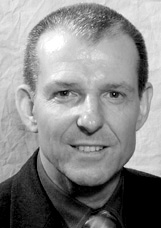
Profile of the Author
Mr. Marquardt was born on June 7, 1943 in a barrack of the air base in Kamp in Pomerania. His father was based there; he had to fly the supply-flights for the German government. In 1945 his mother and her four children were able to flee from Stralsund to Copenhagen on a hospital ship of the navy. They were resettled in a German refugee camp in Lingen/ Ems in 1947. Here, Mr. Marquardt grew up and was trained to be a machinist and building fitter (1957-1960). After 1962 he moved to Berlin. There he worked in the production of passenger coaches of rail vehicles. He had to install the train lighting. During this work he came into close contact with asbestos - a fact that led to a dreadful lung disease forty years later.
In 1972 his life changed; he started working at the PTB (Physikalisch-Technische Bundesanstalt) - the German Federal Physics Institute. There he worked in the sector of scientific-technical infrastructure until his retirement in 2008.
In 1975, he read the article “Der Name Gottes im deutschen Sprachgebrauch kein Geheimnis“ (“The name of God in the German use of language – no secret”) in a magazine. This interesting article influenced his later work. Two rain-swept family vacations in the Allgaeu (a southern German region in Swabia) led to the decision to visit all churches in the area and to look for the name of God there. Soon the family discovered the joy of this activity. So the next vacations were planned in order to visit new areas and countries. All discoveries of the name of God were filmed, photographed and documented. Until 1980, Mr. Marquardt produced three color films which were presented in the Berlin area about one hundred times.
A friend offered him a Nuremberg Jehovahthaler in 1978, and he was astonished to find the name of God even on such an object. So he decided on an impulse to visit the Germanic National Museum in Nuremberg in order to investigate whether there are more of these coins. He was very pleased to find more of them there. In 1987, he already possessed four own Jehovahthaler, and an article in the numismatic journal “Mu¨nzen Revue” from February 1987 about the topic “Symbolic depictions of God on European coins and medals” caught his attention. A short time later, the “General Encyclopedia of Sciences and Arts”, written by Ersch and Gruber in 1838 (German title: “Allgemeine Enzyklopädie der Wissenschaften und Ku¨nste von Ersch und Gruber“), fell into his hands. Then he realized that the so-called Jehovahthaler was an own category of coins and that there has to be a larger number of coins and medals of that kind.
Now he was infected by a virus. Mr. Marquardt wanted to find out more. Yet he tried to find out everything about these coins. How did the name of God find its way into numismatics and onto coins and medals? Did that happen just for reasons of propaganda or was there a certain religiousness of the rulers behind it? Why and how did the name disappear later? The attempt to find the answers to these questions determined all his activities. This, in turn, had a positive effect on his whole family. Everybody tries to support him in some way or other down to the present day.
If you want to attribute the competence to write a book about the name of God on coins, medals, or other objects, you have to mention Mr. Marquardt foremost. He has been travelling across Europe with international directories for 35 years, and in spite of his serious illness he still undertook four journeys abroad last year. He studied the numismatic literature for more than 20 years and visited the numismatic collections in Bern, Harlem, Nuremberg, Berlin, Copenhagen, Uppsala and Gdansk. His own picture library currently comprises about 5,000 photographs. He could write down only a part of his extensive expert knowledge in this book.